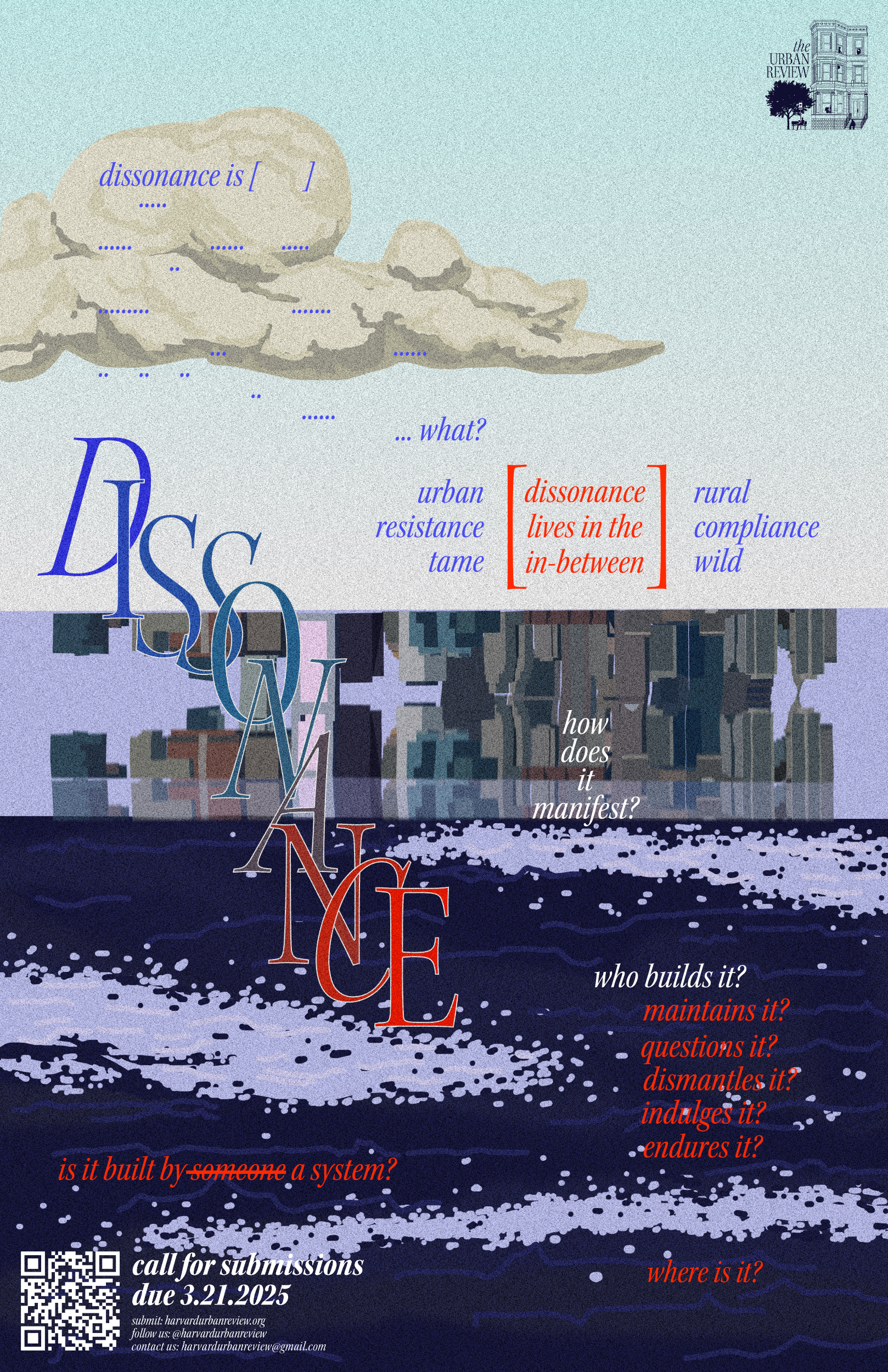
In music, dissonance can build anticipation. In psychology, it’s where belief conflicts with belief or belief conflicts with action. Take a walk: how much of the built environment eludes resolution? Dissonance lives in the cracks, pleading for logic but laughing at its imposition. Sometimes it demands that we interrogate the world around us, prompting us to question what is. What does that look like? How does it manifest? Who builds it?
Perhaps it’s inherently part of our discipline:
To anticipate, just to be surprised,
To diagnose, just to neglect,
To design, just to be critiqued…
Embedded into the very fabric of our being:
In the music we listen to,
The psyche we wrestle with,
The cities we live in…
…lurking, malleable, waiting to be exposed.
This issue of the Urban Review at Harvard GSD, help us answer: how can dissonance be productive? In your work, how is it relative or contextual? What are its geographies, and when is it useful, or even necessary?
We welcome submissions on topics broadly related to urban studies, planning theory, planning practice, or the built environment. These can be essays, works of fiction, poetry, interviews, photography, visual art, design projects, or other media. We’re especially interested in submissions that are situated in a specific location. Submit to our Dissonance issue.
If you would like to discuss a particular submission, pitch, question, or complaint, please get in touch at harvardurbanreview@gmail.com.
Submission Deadline: April 6, 2025 at 11:59 p.m. EST